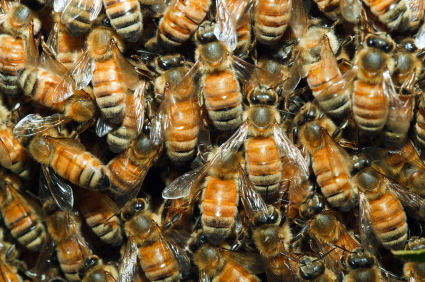10 Lessons from the Swarm
I recently finished reading Peter Miller’s The Smart Swarm, and I highly recommend it. In it, Miller provides a fascinating overview of how various types of animals – ants, honeybees, termites, sparrows – tackle complex problems by leveraging collective “intelligence.” Better yet, Miller points to the lessons that humans might learn from these animals.
What follows is a run down of some of the major lessons from the book. Also, I’ve posted an excerpt – When in Doubt, Turn to the Experts – but I highly recommend reading the book in its entirety.
***
Miller identifies four major principles of smart swarms: self-organization,diversity of knowledge, indirect collaboration, and adaptive mimicking. Here are ten points I took from his discussion of the four principles:
- Decentralized control: For self-organization to produce worthwhile results – like, for example, the Linux operating system or Wikipedia – individual members of a group have to be free to make their own decisions within a relatively sparse set of restrictions imposed by the community (e.g., no profanity, appropriately commented code).
- Distributed problem solving: It’s in the very nature of complex problems that no single individual has the answer. Each member of the group contributes a bit towards creating a solution, just as many different writers and editors may contribute to a single Wikipedia entry.
- Multiple interactions: Of course, for distributed problem solving to work, there have to be opportunities for individuals to interact frequently and in a variety of different ways. As Miller puts it, repeated interactions help to “amplify faint but important signals and speed up decision making” [267].
- Diversity of knowledge: Of course, if all the interactions are among the usual suspects (a problem I find with many trade and professional associations), then you end up with birds of a feather syndrome, or homophily. For wrestling with really complex issues, bring together individuals with a wide range of backgrounds and cognitive abilities. A “healthy dose of randomness” [267] can also be a plus.
- Limits of human intuition: Our “gut” is often not what we think it is. In addition to the tunnel vision that can come from homophily (above), Miller argues that our intuition, which has been “shaped by biological evolution to deal with the environment of hunters and gatherers, is showing its limits in a world whose dynamics are getting more complex by the minute.” [58]
- Friendly competition of ideas: To compensate for the limits to our intuition and make the most of a diversity of knowledge, what we need is a bit of healthy competition among ideas – you know, the type of thing you might get when you don’t just teach to the test or dogmatically adhere to “best practices.”
- Effective mechanisms for narrowing choices: If you are going to allow for a bit of competition, you have to have some way to narrow down the choices and make decisions. For me, Miller’s description of the seemingly byzantine processes of New England town meetings [83-91] suggested why human beings so often fail at directly leveraging collective intelligence – most of the time, we don’t have the patience and discipline for it.
- Indirect collaboration: Miller doesn’t really talk about it as such, but I think that human beings’ ability to collaborate indirectly – to work independently yet collectively toward a common end like Wikipedia, or, I would argue, democracy – is perhaps the great antidote to our seeming weakness in working directly together to make hard choices. The wonder is not that we face so many problems, but that we have somehow solved so many together in spite of our differences.
- Adaptive mimicking: One of the reasons that indirect collaboration and many of the other concepts listed here have such power is that, once they start to take hold, they can spread rapidly because of our tendency to mimic each other. The forces of influence are strong – particularly given the growth of the Web and mobile communication technologies. While they can be forces for good, they do also have their dark side – a point Miller brings home with force in his discussion of locusts as well as a number of human tragedies resulting from crowds spiraling into self-destructive behavior.
- Risk minimizing strategies: As so much of Miller’s book suggests, there are often great benefits to going along with group behavior. As one sociologist Miller interviews puts it, “Nine out of ten times it’s the right thing to do…or at least it is a risk minimizing strategy [212].” In other words, when we run with the herd, go with the flow, we tend to increase our real and perceived safety – both physically and mentally. The challenge for all of us, of course, is paying enough attention to know when it makes sense to break away from the herd.
Naturally,there is a great deal more to Miller’s book than what these ten bullets can provide. If you have the least bit of interest in how human beings learn and act as groups, reading all of The Smart Swarm is well worth your time.
Jeff

No comments:
Post a Comment